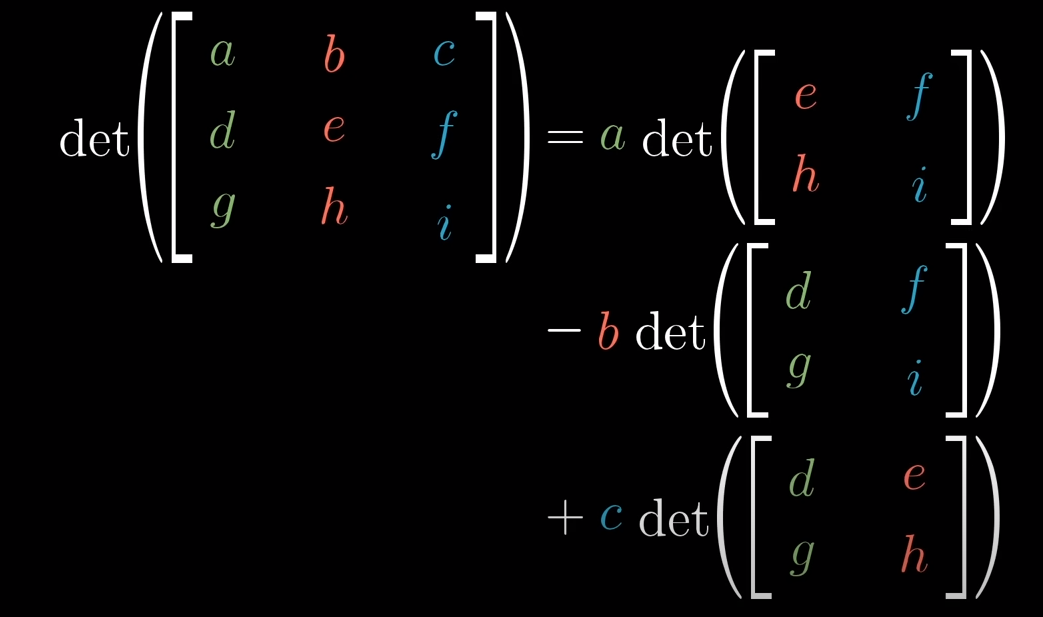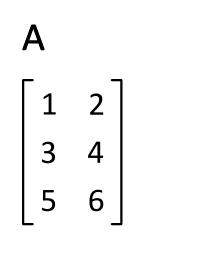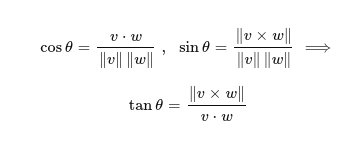Always i, j , k
|a| = amplitude of vector a
i_x j_x i_y j_y
Representing Vectors
R^n
Set of lists of n numbers R^1 is a vector space which is a list of all single numbers
Geometrically
Arrows but without coordinates
Arrows with coordinates
Unit Vectors
(x, y, z) i^ = (1, 0, 0) j^ = (0, 1, 0) k^ = (0, 0, 1)
Cross products
i^ x j^ = +1
Determinate
Measures how area or volume changes with a linear transformation
[a b] [c d] = ad-bc

Dot products
- Multiply corresponding elements of vector
- Sum resulting coefficients/amplitudes
- Amplitudes that don’t exist are 0, and multiplication rule holds true
Other rules
Vectors are orthogonal when their dot product is zero

Matrix Multiplication
- undefined when number of columns of first matrix don’t match number of rows of second matrix
print("[a b] [e f]\n[c d] [g h]")
a = int(input("a: "))
b = int(input("b: "))
c = int(input("c: "))
d = int(input("d: "))
e = int(input("e: "))
f = int(input("f: "))
g = int(input("g: "))
h = int(input("h: "))
alpha = (a*e) + (b*g)
beta = (a*f) + (b*h)
carrot = (c*e) + (d*g)
delta = (c*f) + (d*h)
print("[", alpha, " ", beta, "]\n[", carrot, " ", delta, "]")Composition of Transformations
Matrices aren’t associative so you have to do it the right way around


Transposition (X^T)

Generalized Transformations
Counterclockwise R^3 about the x axis
 .
.
General or Non-Conforming Rules
